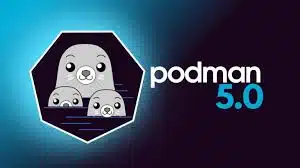-
- Fixing ‘Connection Refused’ Errors in Podman 5.0 Rootless Containers
- Understanding the ‘Connection Refused’ Error
- Configuration Steps to Fix ‘Connection Refused’ Errors
- Step 1: Verify Container Status
- Step 2: Check Service Binding
- Step 3: Inspect Network Configuration
- Step 4: Adjust Firewall Rules
- Step 5: Test Connectivity
- Practical Examples
- Best Practices for Podman Rootless Containers
- Case Studies and Statistics
- Conclusion
Fixing ‘Connection Refused’ Errors in Podman 5.0 Rootless Containers
As containerization continues to gain traction in modern software development, tools like Podman have become essential for managing containerized applications. However, users often encounter ‘Connection Refused’ errors when working with rootless containers in podman 5.0. Understanding how to troubleshoot and resolve these issues is crucial for maintaining efficient workflows and ensuring application availability. This guide will provide you with actionable steps, practical examples, and best practices to effectively address these errors.
Understanding the ‘Connection Refused’ Error
The ‘Connection Refused’ error typically occurs when a client attempts to connect to a service that is not accepting connections. In the context of Podman rootless containers, this can happen due to various reasons, including misconfigured network settings, firewall rules, or the service not running as expected.
Configuration Steps to Fix ‘Connection Refused’ Errors
Step 1: Verify Container Status
Before diving into network configurations, ensure that your container is running. Use the following command to check the status:
podman psIf your container is not listed, start it using:
podman start Step 2: Check Service Binding
Ensure that the service inside the container is correctly bound to the expected port. For example, if you are running a web server, it should be listening on the appropriate port:
curl http://localhost:If you receive a ‘Connection Refused’ error, check the service configuration files to confirm that it is set to listen on the correct interface and port.
Step 3: Inspect Network Configuration
Podman uses a user-defined network namespace for rootless containers. To inspect the network settings, use:
podman network inspect Ensure that the network settings allow for communication between the host and the container. If necessary, create a new network:
podman network create Step 4: Adjust Firewall Rules
Firewall settings on the host machine can block connections to the container. Check your firewall rules using:
sudo iptables -LIf you find that the relevant ports are blocked, you can allow traffic using:
sudo iptables -A INPUT -p tcp --dport -j ACCEPTStep 5: Test Connectivity
After making the necessary adjustments, test the connectivity again using:
curl http://localhost:If the connection is successful, the issue has been resolved.
Practical Examples
Consider a scenario where you are running a Node.js application inside a Podman rootless container. If you encounter a ‘Connection Refused’ error when trying to access the application, follow the steps outlined above to ensure that:
- The Node.js server is running and listening on the correct port.
- The container is properly configured to expose the port.
- Firewall rules allow traffic on that port.
Best Practices for Podman Rootless Containers
- Always run containers with the least privilege necessary to enhance security.
- Regularly update Podman to the latest version to benefit from bug fixes and improvements.
- Utilize Podman’s built-in logging features to monitor container activity and troubleshoot issues.
- Document your container configurations and network settings for future reference.
Case Studies and Statistics
According to a recent survey by the Cloud Native Computing Foundation, over 60% of organizations reported encountering networking issues while using container orchestration tools. Properly configuring network settings and understanding how to troubleshoot connection issues can significantly reduce downtime and improve application reliability.
Conclusion
Fixing ‘Connection Refused’ errors in podman 5.0 rootless containers requires a systematic approach to troubleshooting. By following the configuration steps outlined in this guide, you can effectively diagnose and resolve connectivity issues. Remember to adhere to best practices to enhance the performance and security of your containerized applications. With these insights, you can ensure a smoother experience while leveraging the power of Podman in your development workflows.
